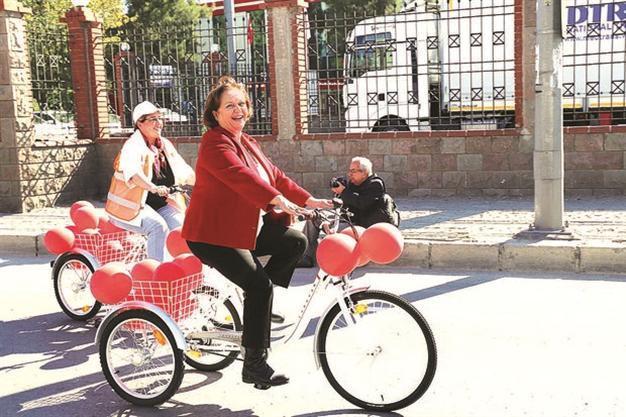Urban Planning Ministry issues bylaw to ensure safe cycling in urban traffic
ANKARA – Anadolu Agency

DHA photo
Turkey’s Environment and Urban Planning Ministry has issued a bylaw to ensure safe cycling in intra-city traffic by regulating the construction of bicycle roads and stations.
The regulation on the design and construction of bicycle roads, stations and parking lots entered into force after being published in the Official Gazette on Nov. 3.
According to the regulation, roads will initially be constructed in regions determined to be suitable for biking in terms of their topography.
The continuity of roads was underlined as an important aspect of planning, as it was desired for cyclists to reach their destinations without facing interruptions such as junctions, median strips or building sites.
The project also aspired to encourage cycling as an alternative to public transportation. Hence, cycling roads will be constructed in locations which will enable access to important means of public transportation including subway, train and bus stations, as well as ferry ports.
In addition, a number of public buses equipped with bike racks will operate between predetermined routes. Such routes will be designated based on the intensity of traffic and the frequency of hills, which may discourage cyclists.
Bus drivers will also be educated and instructed on how to interact with cyclists.
The regulation also added that cyclists will be free to use subways and ferries with their bikes, with the exception of rush hours. At those times, a limitation will apply to how many cyclists will be permitted to take the subway.
The regulation explained that bicycle roads will be built between sidewalks and the right traffic lane, and there will be an adequate number of parking lots and stations along the road.
The expropriation of land for the construction of cycling routes will be in line with Turkish Expropriation Law, according to the regulation.
Additionally, municipalities will be in charge of the maintenance, repairs, supervision and security of all cycling routes and parking stations within their provincial borders.
Commenting on the regulations, Selami Merdin, the deputy general manager of the ministry’s Directorate of General Vocational Services, said transportation via bicycles would also contribute to the reduction of carbon emissions.
According to Merdin, 32.58 percent of all carbon emissions are caused by cars, and half of that figure is a result of intra-city traffic.
“If we succeed doing 10 percent of our intra-city transportation via bicycles, we will be able to reduce carbon emissions by 948,000 tons annually,” he said.
The bylaws are the latest in a series of efforts by the government to expand the use of bicycles as a means of public transportation for city dwellers.
The government recently started building bicycle roads around the Bosphorus, a practice which excited Istanbulites while on the other hand fueling worries about the narrowing of the strait.
In late July, a 700-meter-long public road project began in Emirgan, located on Istanbul’s European coast.
Afterwards, in September, the construction of a 10-meter-wide public road project, which is set to include separate lanes for pedestrians, runners and cyclists, began on the Anatolian side of the Bosphorus.
